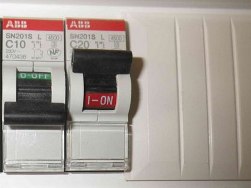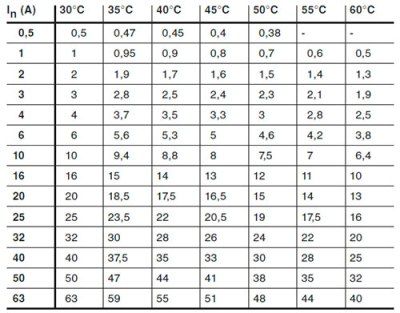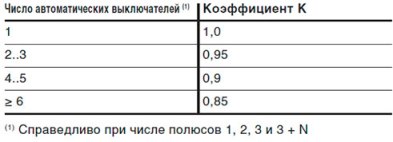Categories: Electrician Secrets, Automata and RCD
Number of views: 41527
Comments on the article: 10
Is it worth replacing a circuit breaker if it "knocks out"?
 Quite often, this situation occurs: the circuit breaker is periodically knocked out and another larger rating is installed in its place, “so as not to knock out”. Why does the circuit breaker trip in this case, and what are the consequences of such a replacement?
Quite often, this situation occurs: the circuit breaker is periodically knocked out and another larger rating is installed in its place, “so as not to knock out”. Why does the circuit breaker trip in this case, and what are the consequences of such a replacement?
The rating of the circuit breaker is selected in such a way as to protect the load line wire from overheating and melting of the insulation. Circuit breaker must disconnect the line from the load before the current reaches a critical value for the cable.
When devices of higher power (and therefore higher current) are turned on in lines that are not designed for this power, the cable overheats in the circuit, which leads to the thermal protection of the circuit breaker tripping, i.e. he “knocks out”. He stands guard, as he should, and protects the line from overload.
What happens if a larger circuit breaker is installed in this line? For example, instead of 16A, set 25A?
The current in the circuit will not change (for example 18A), for a circuit breaker in 25A this is the usual mode of operation. But the cable section has not changed. The current exceeds the permissible value, the cable continues to overheat. This can lead to melting of the insulation and fire.
The following options are possible as a solution:
1. If several consumers simultaneously turn on the circuit breaker, then do not turn everything on simultaneously without overloading the circuit.
2. If the circuit breaker is triggered by the inclusion of one powerful device:
a) if the wiring allows, draw a separate cable from the switchboard specifically for this device, installing a circuit breaker of the required rating in the switchboard,
b) if the wiring does not allow, then do not use this consumer.
Why does a circuit breaker trip in the heat?
Very often, perfectly functional circuit breakers start to operate in the heat. Let's try to figure out what the “focus” is, why this happens.
Immediately agree that the machine and the connected devices are working, the wiring is also in order. The operation occurs some time after the machine is turned on again.
As you know, the thermal protection of the circuit breaker starts to work when the current in the line reaches 1.13In, i.e. when the current is 13% higher than the rated current of the machine. Moreover, the response time will be more than one hour. For the most common automatic machine 16A installed on socket groups, the initial current at which the thermal release can trip will be 16x1.13 = 18.08A.
Thus, if with devices connected, a current close to 16A flows through this group line, the circuit breaker should not operate.
The rated current of the circuit breaker indicated on its case is given for an ambient temperature of + 30 ° C. Manufacturers' catalogs usually indicate corrections to the rated current, depending on the ambient temperature.
Here is a table from the Hager directory:

In addition, the size of the rated current of the machine is influenced by other machines installed nearby. And if there are a lot of them (and in modern switchboards they are usually installed on one DIN river, 12 pcs.), Besides, if a load is connected through most of them, then they can significantly heat each other. Table from the same Hager directory:

Suppose that the temperature in the switchboard is + 45 ° C, for a machine with a rating of 16A at this temperature, the rated current will be already 13A, the trip current of the thermal release at this temperature is 13x1.13 = 14.69A. Those.in our case, the load current in the line exceeds the initial threshold of the thermal release.
And if we take into account the adjacent machines (let's say 4 pcs.), Then we get at + 45 ° C the rated current 13x0.9 = 11.7A.
With this rated current, the thermal protection will start to work at 11.7x1.13 = 13.22A.
In winter and in the off-season it is cooler, the threshold for the thermal protection is higher, with the arrival of heat this threshold decreases.
In the summer, such situations sometimes occur, especially in offices where computers, office equipment, air conditioners are connected to one outlet group, lines are overloaded, moreover, electrical panels are usually installed in halls where there are no air conditioners and are poorly ventilated. The operation of automatic machines in these cases is quite common.
See also at e.imadeself.com
:
